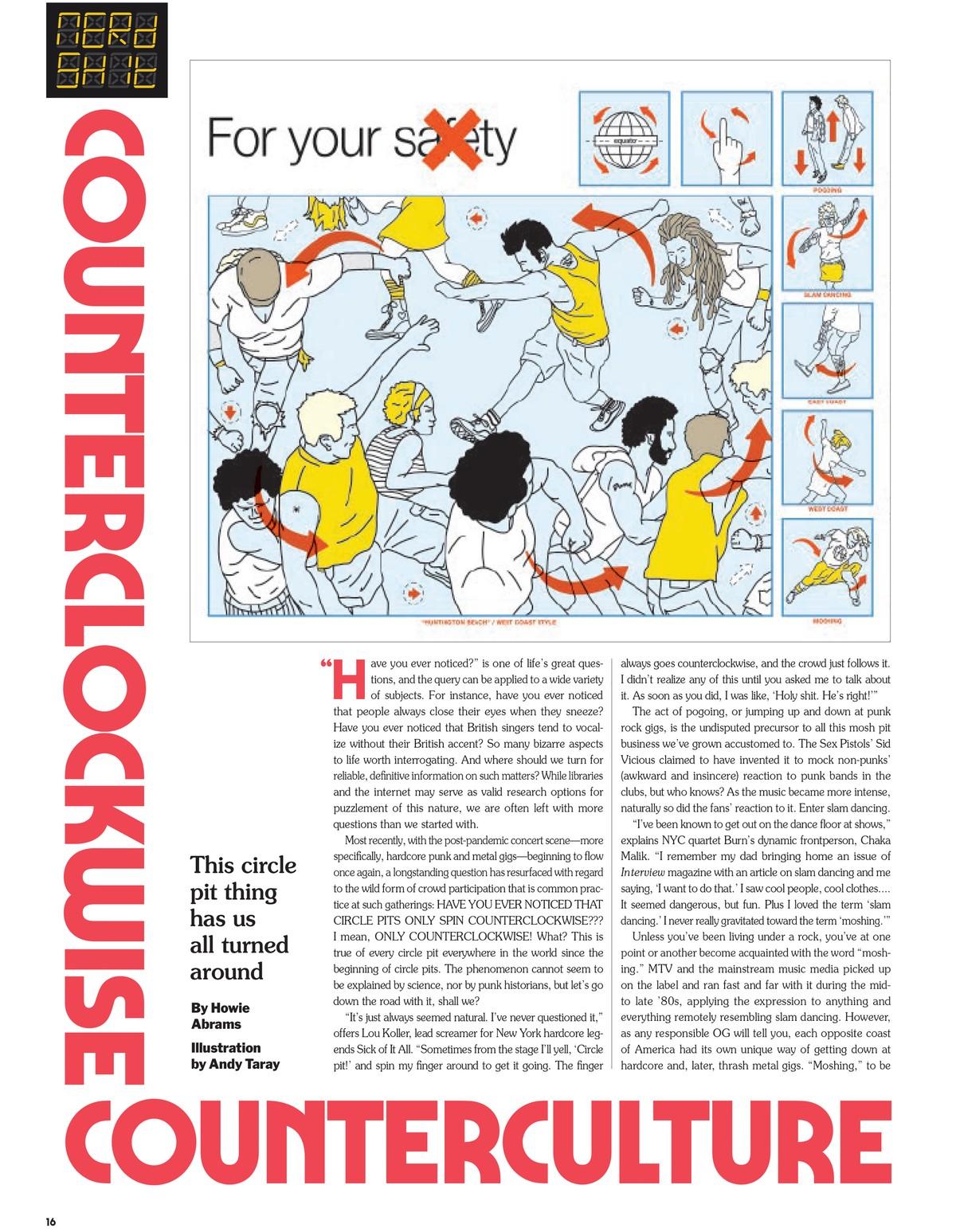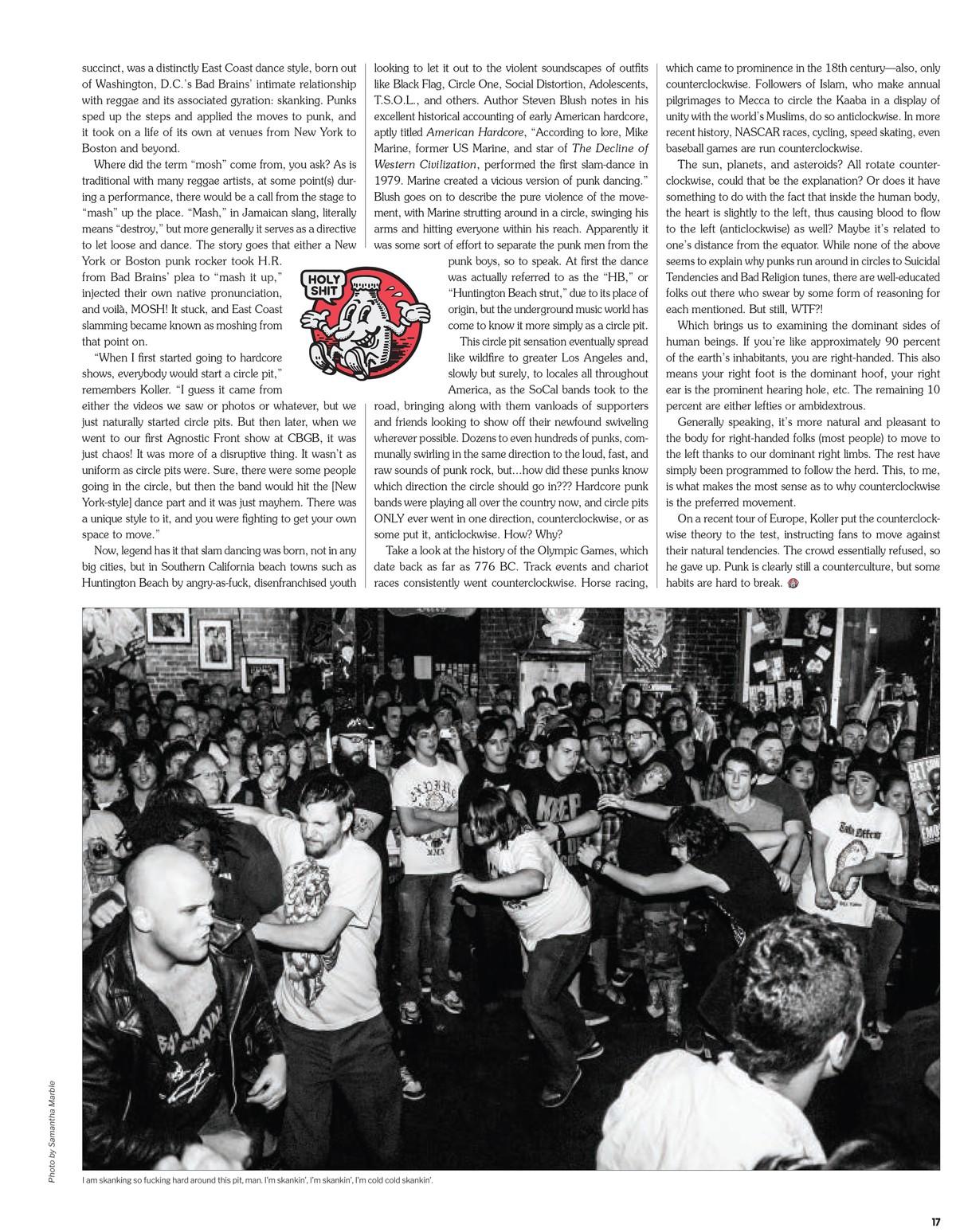NERD SHIT
COUNTERCLOCKWISE COUNTERCULTURE
This circle pit thing has us all turned around


Have you ever noticed?” is one of life’s great questions, and the query can be applied to a wide variety of subjects. For instance, have you ever noticed that people always close their eyes when they sneeze? Have you ever noticed that British singers tend to vocalize without their British accent? So many bizarre aspects to life worth interrogating. And where should we turn for reliable, definitive information on such matters? While libraries and the internet may serve as valid research options for puzzlement of this nature, we are often left with more questions than we started with.
Most recently, with the post-pandemic concert scene—more specifically, hardcore punk and metal gigs—beginning to flow once again, a longstanding question has resurfaced with regard to the wild form of crowd participation that is common practice at such gatherings: HAVE YOU EVER NOTICED THAT CIRCLE PITS ONLY SPIN COUNTERCLOCKWISE??? I mean, ONLY COUNTERCLOCKWISE! What? This is true of every circle pit everywhere in the world since the beginning of circle pits. The phenomenon cannot seem to be explained by science, nor by punk historians, but let’s go down the road with it, shall we?

